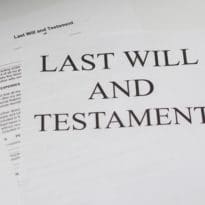Martin Jones, Technical Manager at AJ Bell, examines the different ways of dealing with a pension scheme following the break-up of a marriage or civil partnership.
When a couple get divorced or have their civil partnership dissolved, a pension is likely to be the single biggest asset outside of the family home. It’s important, therefore, that the pension is properly accounted for when assets are divided.
There are three ways of dealing with a pension: offsetting, earmarking and sharing. As an adviser or paraplanner, you may be called upon to help either of the parties, so it’s useful to have an understanding of how these approaches work.
Offsetting
With pension offsetting, the spouse holding the pension retains all rights to the pension. Instead, there is a trade-off with other assets changing hands, with the traditional scenario being that one party keeps the pension while the other keeps the house.
Given that the pension remains intact, there are no challenges around the implementation of offsetting from an administrative perspective, unlike the other approaches we’ll look at, so it is seen as a relatively straightforward approach.
What can be overlooked, however, is the difficulty of coming up with a meaningful value for the pension to compare against the value of other assets.
With a defined benefit pension in particular, while the scheme trustees can calculate a cash equivalent transfer value, the real value in the pension is the guaranteed lifetime income in retirement. Comparing the future value of income against the current value of a residential property, for example, is very much an apples and oranges comparison.
With a defined contribution pension, it’s more straightforward given it’s usually possible to value the cash and investments in the pension without too much difficulty. That said, the pension can’t be accessed until the member is 55 (or 57 depending on age), its value can fluctuate, and it will grow tax-free, all of which is not the case with a property.
Earmarking
With earmarking, part of the pension benefits is paid to the former spouse but only at the point those benefits are drawn upon. The benefits that can be split are the tax-free lump sum, pension income and lump sum death benefits.
With pension income, it’s still taxable in full on the pension holder. The net income is then split with the former spouse, for whom it doesn’t count as taxable income.
Earmarking can only be granted by a court order, and it is typically referred to as a pension attachment order.
The main drawback for the spouse without the pension is that they have no control over the timing of the benefits. With a defined benefit pension scheme, they will have a reasonable expectation of when they might start receiving a share of the income, but even then the other spouse may be able to defer the pension depending on the scheme rules.
Certainly, earmarking is much less desirable with a defined contribution scheme that could be left uncrystallised indefinitely.
Plus, earmarking doesn’t afford an opportunity for the parties to achieve a clean break. In practice, earmarking might only be useful if the pension has an early retirement age and if the parties are on reasonable terms.
Sharing
Pension sharing has been around since 2000. Under this option, one spouse takes a percentage of the other spouse’s pension and receives the ‘pension credit’ into a pension in their own name. They can then invest it according to their own risk profile and retirement timeline.
In order for this to take effect, it must be granted by a court as part of the divorce order. This is the only way that pension rights can be passed to another person while the member is alive.
Pension sharing was a big improvement on earmarking, which had been around since 1996, as it allows the parties a clean break and gives the recipient of the pension credit more control.
That said, it is not without challenges or perceived drawbacks. The split must be specified as a percentage and not a monetary amount, and given the fluctuating nature of pension investments, the percentage agreed at the outset might yield a different value a year or two down the line when the order is implemented. This is a recognised issue and is sometimes referred to as “moving target syndrome”. Certain illiquid assets, like commercial property, can also be difficult to split in practice.
In Scotland, the rules are different, and the parties can specify either a monetary amount or a percentage. There is also the option of implementing the sharing via a minute of agreement, which is more straightforward than a court order. With a minute of agreement, it is only possible to specify a monetary amount.
Main image: engin-akyurt-Jw5Kth70hQo-unsplash






























